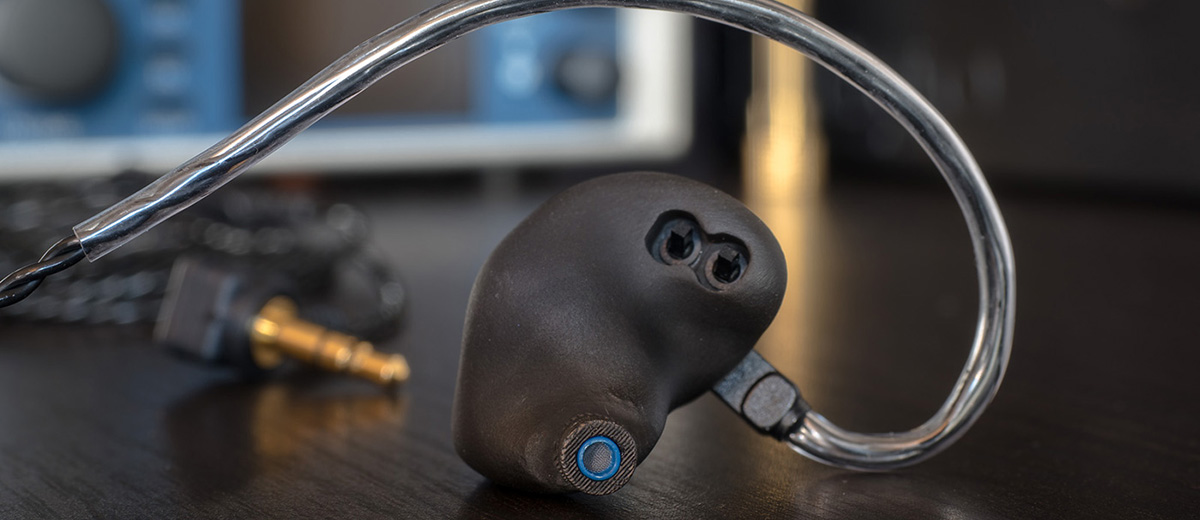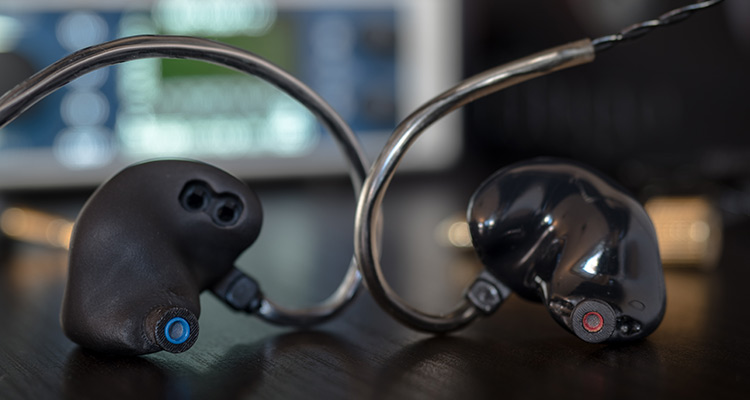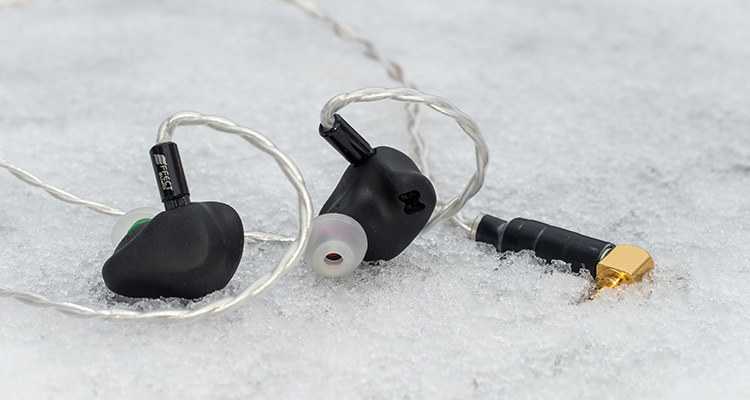Matchability
Efficiency
The InEar ProPhile 8 is very efficient and at 120 dB SPL quickly reaches loud volumes. They also pick up background noise. For example, the small Cozoy Aegis showed a moderate amount of hiss. The PP8 also uncovered some distortion. A better source for IEM is recommended.
Smartphones
The iPhone 6S Plus as a DAP provides a cleaner signal. The slightly higher output impedance does not bend the tuning much, though the PP8 gains some emphasis on the bottom end. This proves to be a very good source and the iPhone easily outclasses the iPod Classic that clouds and muffles the output. It is not before some very demanding speed that the iPhone starts to show its limits. One example is the double drum set with the Rockband Kylesa.
Amps
The Chord Hugo shows significantly better control of the lower frequencies compared to the iPhone with said example. As usual, the Hugo creates amazing space between the instruments and sets the listener back a row. This effect is further enhanced with activated crossfeed and the Hugo + PP8 combo has quickly become my favorite for all things Jazz and Classical related. I cannot wait to try the Hugo 2!
The RME ADI-2 Pro shows some more intimacy and a blacker background. I especially enjoyed this source for Rock and Vocal music. The clarity is simply amazing and does not take a hit with activated crossfeed either. The ProPhile 8 are also the earphones that showed the acoustic differences of the various DA filters most clearly. I noticed settings Slow and NOS to be too muddy for reference sound in this match. Obviously, the very handy bass and treble knobs make ProPhile’s switches obsolete as they can be programmed to react exactly the same as intended by InEar.
Select Comparisons
When comparing with other IEMs and CIEMs, the ProPhile always comes out on top as the one with the best timbre. All the instruments in my ECM collection sound as realistic like I have not heard before apart from my speakers. This makes comparisons very tricky as I lean to always prefer the Prophile 8.
Vision Ears VE6 (X2)
The closest in line would be Vision Ears’ VE6 (X2), but though not being sibilant, they have a tendency to pronounce S-sounds reminiscent of the grand HD 800 and thus create an overall more analytical and dry presentation. Though besting the PP8 in width, the VE6 doesn’t achieve the same depth.
Etymotic ER4 XR
Another close call is the Etymotic ER4 XR, which’s tuning is basically very similar to the Prophile 8. However, the Ety have just a pinch too much vocal presence and push the midrange forward to an extent that can cause some fatigue. The same goes for the ER4 SR that additionally lacks the bass presence. The technical performance quickly shows its limits and the ER4 sound pressed, lifeless and flat in comparison. ProPhile’s older and smaller brother StageDiver 2 now sound muffled to me and the treble seems too recessed to match the brother’s tuning.
IE800
Hitting both switches for a balanced signature on the Prophile 8 opens up a broader pool of IEMs to compare with. However, most balanced signatures exaggerate quite a bit, for example, the IE800. The Sennheiser doesn’t match PP8’s attack in the slightest and the treble tuning is a lot brighter, though equally tight. IE800’s soundstage is bigger although I find their monitoring capabilities to be very limited.
Jomo6 V2
The loudness setting of the ProPhile is comparable to the Jomo6 V2. The J6V2 as CIEM shows more texture but the Prophile 8 punchs harder. Female voices have a slight tendency to sound bright on the Jomo and the treble, though extending further, does not provide the same amount of clarity or air. At this point, I wish I would have gotten my hands on the Campfire Andromeda, but sadly I was not successful.
So far the ProPhile 8 manages to make every IEM or even headphone in my collection sound colored, usually mostly in the midrange and treble.
Our Verdict
Humble in its appearance, InEar yet again impresses with the Prophile 8’s amazing universal fit and great build quality. Sonically, the Prophile 8 showcases incredible clarity, high speed, great attack, uncolored midrange and a transparent tuning like I have not experienced before. They’re not of the wowing kind that makes you hear things you haven’t heard before. Instead, they refine them in a very mature way. The room for improvement has become very, very small. Classifying the ProPhile 8 as the best jack of all trades would be an understatement.
The InEar ProPhile 8 is not only the company’s flagship, as of right now, it’s also the flagship of all of Germany’s in-ear monitoring systems. The ProPhile 8 is so impressive that I suggest dropping the number 8 altogether. This is the ProPhile! A masterpiece of an IEM with professional monitoring capabilities and also audiophile musical tuning, nearly regardless of personal preference thanks to the sound tuning switches. The only two groups that I do not see to match the target market are extreme bass heads and users that successfully calibrated their ears to the ER4 S.
Granted, the asking price of nearly 1.300 € is not low, but when has a reference ever been cheap? In the case of the ProPhile, due to it potentially almost achieving CIEM qualities, I can absolutely recommend it. I am sure, this is a monitor we will continue to hear about a lot!
Technical Specifications
- 8-BA per side multi-driver in-ear monitor
- 4-way crossover
- bass and treble tuning switches
- frequency range: 10 Hz – 20 kHz
- output sound pressure: 120 dB (SPL / 1mW@1 KHz)
- impedance: 34 ohms @1 kHz
- cable length: 140 cm (4’7.5”)







